In Plain Light 02.19 – The Transatlantic Issue
Welcome to another newsletter! In this issue: transatlantic travel, the last ocean liner and indian summer in New England and Canada.
You may want to rotate your phone in order to improve your browsing experience on this site.
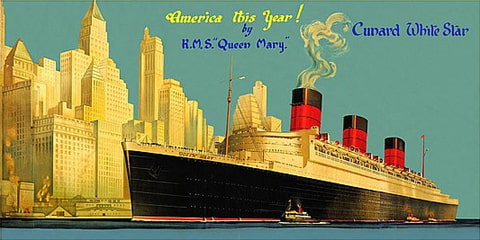 America this year!
America this year!Ad poster for Queen Mary launch, 1936
Quick links
Hamburg
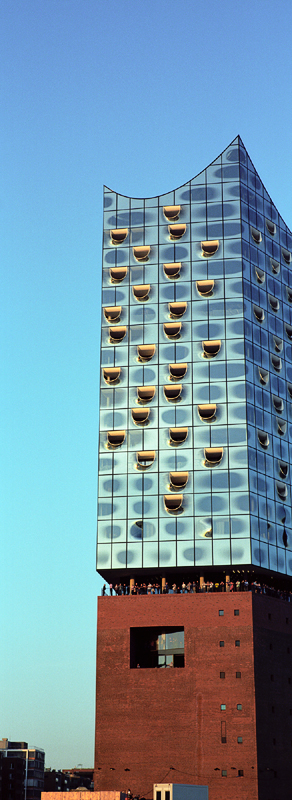 Wave front
Wave frontElbphilharmonie, Hamburg's newest landmark
Everything starts in Hamburg.
Hamburg is the second-largest city in Germany but far less known beyond country borders than, say, Munich, and quite undeservedly so.
This may be due to the fact that its airport, although the oldest still in operation in the country, is rather small and not that well connected. Of course, you can easily reach it by flying first to Frankfurt or Munich and changing there.
On the other hand, Hamburg sports the busiest railway station in Germany with direct services from all major domestic destinations as well as Copenhagen, Prague, Budapest, Vienna, and Zurich. In fact, you only require one transfer when coming by train from such afar as Stockholm, Amsterdam, Brussels, Paris, Milan, Venice, and Moscow.
The demanding journey is well worth it, though. Hamburg is a liberal and fun spot with plenty to see and do, cool places to visit, great venues to eat, and endless options to go out. And it certainly has a long-standing anglophile tradition, which isn't always a given in Germany.
Little known, the Beatles started their career in Hamburg's notorious red-light district, first with a three-month stay in 1960, to return for two more stints in the following years.
This would be another fascinating story, perhaps some other time.
The Port of Hamburg is the most important sea port in Germany, third-largest in Europe and 15th-busiest in the world. Not very obvious, it is actually situated 60 nautical miles (over 100 km) away from sea, on the river Elbe.
The cruise ship terminal in Hamburg-Steinwerder sits on an island in the Elbe facing the city centre. There are shuttle buses running from the main station, or one can choose to walk through the under-river tunnel and then the short distance across the harbour area.
The latter can be actually faster than curving on a bus over several bridges and roads in the harbour district, especially in heavy traffic conditions.
The terminal is huge, on purpose. It can handle much larger ships than Queen Mary 2 which is now "only" the 30th-largest in the world.
Hamburg loves the Queen. The ship called at the city for the first time in July 2004. Her entering port was greeted by an audience of 300,000. Half a million people came to pay their respects on the first day of ship's visit.
Impressed, Cunard made Hamburg a regular stop for the ship.
Here she is again, lying on the quay, her iconic red funnel rising over the terminal, readily visible even from the opposite river bank.
The queue to check in looks rather frightening, a giant snake spiralling over endless bends towards a distant counter.
I am glad not having my camera bounce down as usual from my shoulder. After long consideration, I left it at home. I miss it, though. I imagine how I will miss it when a chance for a picture unfolds before my eyes in days to come.
I give it some thought, all the while moving ahead, dragging my luggage—far too much—along and talking to neighbours in the line, strangers soon to become fellow passengers.
They are headed to all impossible destinations, a liner is just like an ocean-going bus, after all. Some are just out for a taste of comfort, getting off in two days at Southampton, while others are looking ahead at a long time aboard the ship, bound to return with it to Hamburg almost five weeks later.
I am going to stay till the end of the line in one direction, all the way to Quebec City. And while I'm thinking this, it's my turn to step up already.
Little later I'm aboard. And then I'm off.

Rouen
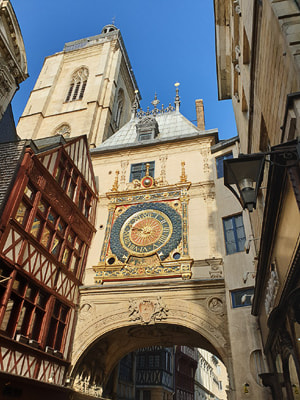 Le Gros-Horloge
Le Gros-Horloge14th-century astronomical clock…
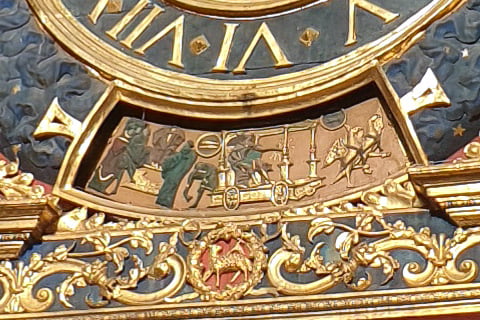 …and its day-of-the-week display
…and its day-of-the-week displayseems one day behind, featuring Jupiter instead of Venus on a Friday morning. This is a detail from the above image in its original resolution.
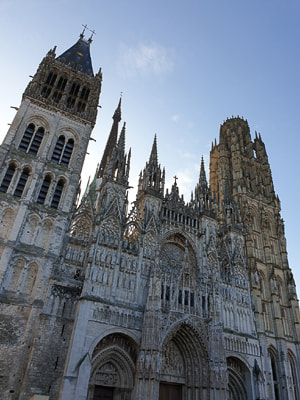 Rouen Cathedral seen from the west
Rouen Cathedral seen from the west Hôtel de Bourgtheroulde, 16th century
Hôtel de Bourgtheroulde, 16th centuryPronounce "Burr-t-rude"
🏰
Useless knowledge: The transatlantic race
There is little doubt that first ships from Europe to reach America were those of the Vikings.
Possibly happened around AD 1000, this hardly was a "transatlantic" crossing—coming from South Greenland to Baffin Island, Labrador and Newfoundland meant the Norsemen only had to traverse the Davis Strait.
Columbus' journey of discovery took place way down south. It left the Canary Islands on 6 September 1492 and reached the Bahamas in the wee hours of 12 October, taking the small flotilla five weeks for its leap of faith.
The first true crossing of the North Atlantic is attributed to John Cabot, a Venetian navigator and explorer. His second journey under the commission of Henry VII of England brought his ship Matthew with twenty crew from Bristol to some place in North America guessed to be either Cape Bonavista and St. John's in Newfoundland, Cape Breton Island in Nova Scotia, or Labrador and even Maine.
The 500th anniversary celebration took place at Cape Bonavista elected as the "official" landing site by the British and Canadian governments.
An entry for 1496-97 in the 1565 chronicle of the city of Bristol tells that much:
“This year, on St. John the Baptist's Day, the land of America was found by the Merchants of Bristow in a shippe of Bristowe, called the Mathew; the which said ship departed from the port of Bristowe, the second day of May, and came home again the 6th of August next following.”
Not much else is known about the voyage, but if the chronicle is correct, it took 52 days one way.
Fast forward 200 years. The 18th century saw the rise of packet trade, regular, often scheduled services to transport mail, cargo and increasingly passengers by ships called packet boats.
Consider them the first liners.
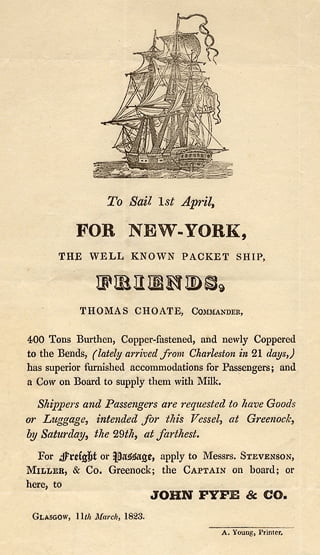 Ad for packet service to New York, 1823
Ad for packet service to New York, 1823Image by Alberto, via Wikimedia Commons
(cropped and rotated)
The term specifically applied to boats between Britain and America over the North Atlantic. The expression was so popular that it made it into French as le paquebot to mean liner or cruise ship.
Competing shipping lines soon started to vie for new passengers by praising the speed of their services and the amenities on board.
Notice the ad mentioning both.
The development of the steam engine finally offered a prospect of reliable sea travel regardless of weather conditions. First steamers used paddle wheels driven by steam engines which were installed in addition to traditional sails and meant to be used in absence of the wind.
The first steam ship to cross the Atlantic Ocean was such a hybrid, the American SS Savannah.
The ship could accommodate 32 passengers in double state rooms for sharing by each sex. Her owners made every effort to fill them and also secure freight for the voyage, but failed to find anybody bold enough to risk lives or property on such a novel vessel.
The journey commenced at Tybee Island, Georgia in the early morning of 24 May 1819 under both steam and sail bound for Liverpool. Sure enough, the ship was several times mistaken by passing boats for being on fire because of its steam trail.
It arrived at its destination after 29 days and 11 hours. Of these, 80 hours were spent under steam.
It would be almost another 20 years before steamships started with regular transatlantic crossings.
 The sister ships held transatlantic speed records from 1893 to 1898
The sister ships held transatlantic speed records from 1893 to 1898The ship to open the service, SS Sirius, did it by pure accident.
Actually built for the London-Cork (then Queenstown) route, the boat was not nearly big enough for ocean going, and its line was no competition for the race.
The one who was, the British and American Steam Navigation Company, fell behind with building its own entry, the British Queen.
At the same time, work on its announced rival, the Great Western, continued without interruption, and she was ready by April 1838, becoming the first purpose-built steamship for transatlantic crossing.
One of the British and American's directors suggested then, they'd charter the available Sirius to beat the Great Western and its namesake owning company.
And so they did. The Sirius was borrowed for two return transatlantic journeys between Cork and New York and departed on the first one on 4 April 1838.
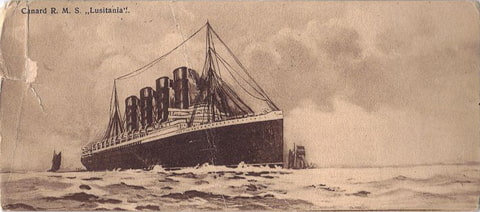 The Lusitania was atop the (westbound) list from 1907 to 1909
The Lusitania was atop the (westbound) list from 1907 to 1909Hit by a German torpedo, she sank off the Irish coast on 7 May 1915
18 days, 14 hours and 22 minutes later it arrived off New York and ran aground at Sandy Hook. Its average speed of 8.03 knots made the first entry in the unofficial list of mythical Blue Riband records.
The Blue Riband was an accolade awarded for the fastest transatlantic crossing by a regular ship service. It was based on average speed and measured separately for west- and eastbound voyages. Early records were compiled in retrospect.
The Great Western wasn't far behind. Though having left Bristol four days later, it was almost twice as big and reached New York after only 15 days and 12 hours at sea the next day after the Sirius, breaking her short-lived record with a new one of 8.66 knots.
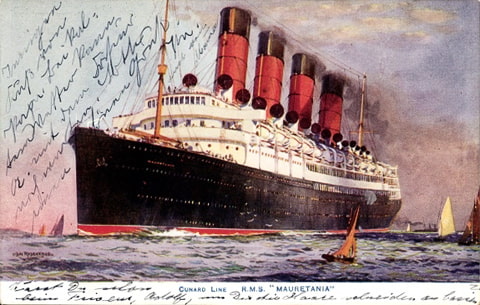 Contemporary postcard featuring R.M.S. Mauretania
Contemporary postcard featuring R.M.S. MauretaniaA long-time record-holder, she led the race between 1907 and 1929
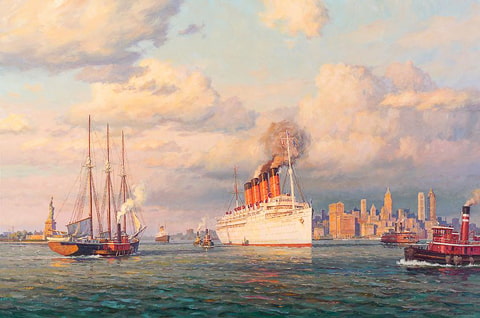 Cunard's R.M.S. Mauretania leaving New York for Halifax
Cunard's R.M.S. Mauretania leaving New York for HalifaxIn last years of her career, painted white and serving as cruise ship
The race grew more and more fierce in the 1890s when ocean liners emerged as symbols of striving nations, their technical and industrial superiority, and overall standing in world affairs.
While competition for world leadership finally caused the world war, the years before it proved to be the golden age of transatlantic travel. Millions emigrants followed the way across the ocean in search of a new and better life—aboard a liner.
Speed and luxury ranked high again to attract new passengers. Time became money, and being fast mattered.
|
Country |
# of lines |
# of ships |
# of records |
Longest consecutive record retention by a ship in one direction |
|
Britain |
6 |
31 |
87 |
21 years, 8 months, 26 days |
|
Germany |
2 |
5 |
17 |
4 years, 1 month, 2 days |
|
United States |
2 |
4 |
7 |
unbroken since 1952 |
|
France |
1 |
1 |
5 |
1 year, 4 months, 23 days |
|
Italy |
1 |
1 |
1 |
1 year, 9 months, 14 days |
Over the years, 18 Cunard ships, more than from any other line, were Blue Riband holders.
The last marks on the record list were left by SS United States in July 1952. On her maiden eastbound journey, she was 3 days, 10 hours and 40 minutes in transit and reached an average speed of 35.59 knots. Heading back, she also upped the westbound record to 34.51 knots.
On 4 October 1958, the first scheduled transatlantic passenger jet service commenced flights from London to New York with a stopover at Gander. This heralded the end of the liner era.
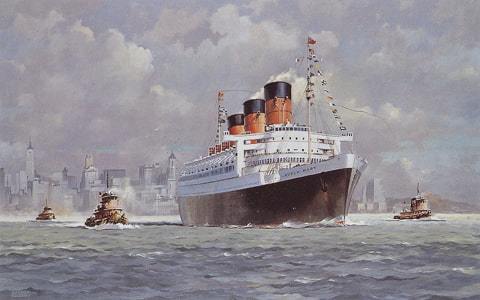 Queen Mary, by Derrick Smoothy
Queen Mary, by Derrick SmoothyThe last Cunard ship to claim the Blue Riband from 1938 to 1952
The current record for fastest transatlantic crossing by boat is held by the private yacht Destriero. Set in 1992, it measures 58 hours, 34 minutes and 5 seconds for an average speed of 53.09 knots.
That—61 mph, or 98.3 km/h—is quite a lot for travel over water.
🏆
At sea
“But what the agitation of a steam vessel is, on a bad weather's night in the wild Atlantic, it is impossible for the most vivid imagination to conceive… To say that all is grand, and all appalling and horrible in the last degree is nothing.”
Charles Dickens
It's not that bad, actually. If I think about it, it's not bad at all.
The ship is huge, this definitely counts. Mind you, it is the largest ocean liner ever built.
Three rounds on the promenade on Deck 7 add up to a mile. The halls on middle decks are so long, you can barely see one end from another.
We sail full, there are 2,500 passengers and half that number staff on board. Still, the ship feels empty. It definitely looks as such. Perhaps everybody is spending days in their cabins, I don't know. I'd guess rather not, can't imagine someone would hole up for any longer than necessary, the weather isn't exactly inviting to risk the look outside.
I, for my part, dwell anyway in an inside "stateroom" endowed with what I call "a rear window". It overlooks the grand lobby. There's not much going on during the day, and even if it were, I couldn't sit still for five minutes at the window. Unless my leg was broken, or something.
A day at sea, on a ship like this, is an exercise in splendid nonchalance. I've been trying to follow a routine I developed quite early on, and I notice how I succeed in getting used to it.
Not that it were difficult. The Italians have an expression for it—dolce far niente, sweet idleness. It's overwhelming.
The day starts not too early, no need to hurry up. The breakfast at the main restaurant takes an hour, at least, à la carte, of course. From 9 o'clock on it is possible to fetch tickets for an afternoon screening in the planetarium at the bow, three quarters of ship length away. Then up six decks to the library for a quick email check, a daily sudoku-and-crossword slip and an attempt to solve those, not very successful. Back down five decks to the theatre for a lecture or a presentation, or something completely different, a wine academy class, a painting lesson, a choir rehearsal, a visit to the art gallery to see the new exhibition or to the shopping arcade to spend more money.
Then it's lunch time already. Another hour and a half at the restaurant, again à la carte, of course. Rush to the planetarium for the show reserved in the morning, then to the theatre for an afternoon concert, back to the stern for afternoon tea at Queens Room, possibly to the cinema for an early evening show, or outside for several laps around the deck to work off some scones delivered with the afternoon tea.
With the evening slowly setting in, it's time to get ready for dinner. I'm in the late seating, this means plenty of time to throw oneself into the evening attire, even for an announced gala venue. These are special, compulsory jacket-and-tie affairs for gentlemen, who really end up looking like some on the occasion. There are usually two or three of these during the week on the Atlantic.
Late night is for entertainment. One can choose between a show in the theatre (too loud for my taste), a film at the cinema (it depends), a dance in the ballroom or in the disco (no way), a game at the casino (no chance), or a couple of drinks in a bar (no objection), or in several (no comment).
By the time you are ready to hit the bed, it's awaiting you, made and complete with chocolate on the pillow. Sweet dreams! Tomorrow is another day.
I came to believe this might be the most relaxing way to spend time. I mean, I never had so much of it on my hands since I was a child.
Imagine this: no obligations, no constraints, no enforcement for a change, just pure, unadulterated bliss.
I think I like it.
🛏
New York
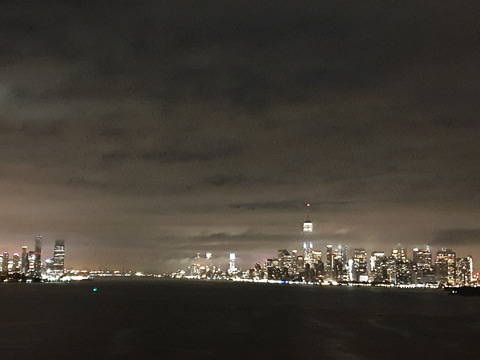 City that never sleeps
City that never sleepsApproaching Manhattan in the early morning
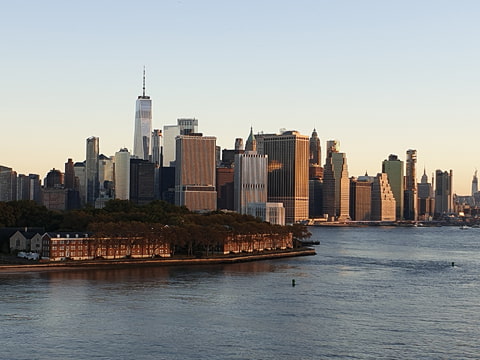 Moored at Red Hook in Brooklyn
Moored at Red Hook in Brooklyn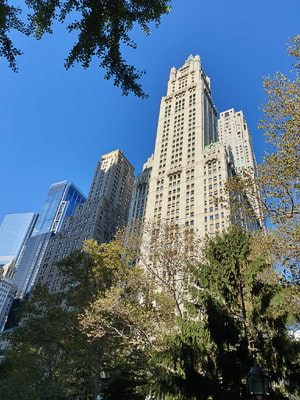 Framed
FramedWoolworth Building from the City Hall Park
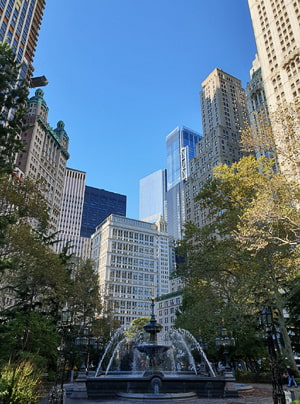 Among giants
Among giants At liberty in Little Italy
At liberty in Little Italy🗽
Cape Breton Island
 Seal Island Bridge
Seal Island Bridge St. Anns Harbour
St. Anns Harbour St. Anns Bay
St. Anns Bay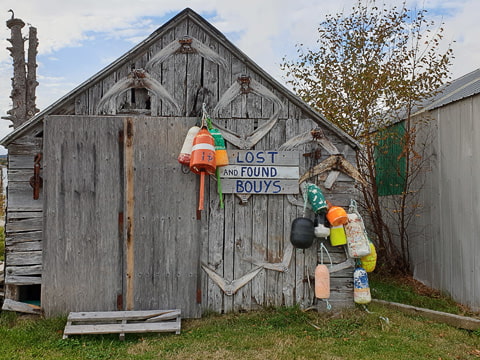 Lost buoys, found
Lost buoys, found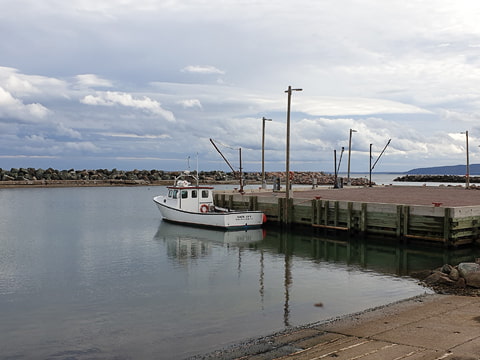 Little River
Little River🍁
Quebec City
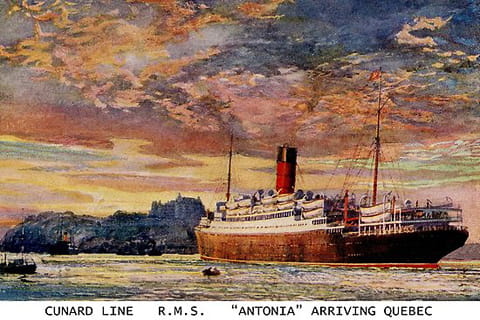 1920s art postcard
1920s art postcard Just arrived
Just arrived Old Quebec
Old Quebec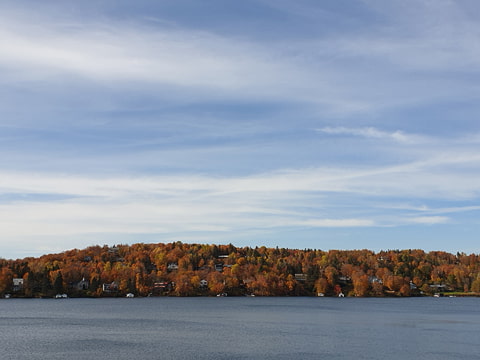 Lac Beauport
Lac Beauport Indian summer
Indian summer Syrupy world
Syrupy worldAt the sugar shack
 Orange
Orange Higher than Niagara
Higher than NiagaraMontmorency Falls
 Smells like autumn
Smells like autumn Up
Up⚜
Useless knowledge: Mary I
Speak of bad timing.
The US-imposed immigration quotas severely affected transatlantic travel in 1920s. The lines were desperate to find a replacement for masses of missing passengers on their aged ships.
The solution? Instead of transporting many poor, they turned to the rich. It was the Roaring Twenties, after all—money did make the world go round.
Luxury was the message to lure new customers, and to convey it, new ships were in much need.
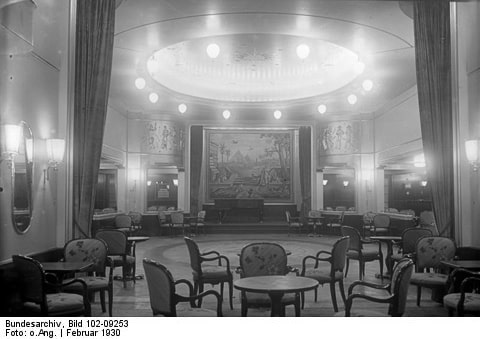 Ballroom on SS Europa during a trial run in February 1930
Ballroom on SS Europa during a trial run in February 1930Photo by Edmund Lill, Bundesarchiv, Bild 102-09253 / CC-BY-SA 3.0
The first to (re)act was Germany, still a liberal republic at the time. The Norddeutscher Lloyd completed the twin ships Bremen and Europa just in time before the world crisis struck in 1929. The Bremen captured the Blue Riband in both directions on her first two passages, becoming the first liner ever to achieve the feat.
The ship was also the first one to carry an airplane for the last-mile mail delivery hours before the liner itself made it to the destination.
In Britain, the White Star Line laid down the RMMV Oceanic in June 1928. The final design envisaged a ship 1,050 foot (320 m) long capable of cruising at 30 knots. The construction stopped, however, in July 1929 in order to decide on the propulsion.
In time the involved parties agreed to a compromise, the Great Depression hit the world. The order was cancelled in 1930, and the Oceanic ended up as two smaller ships built instead, the Britannic and the Georgic.
Meanwhile, Cunard started working on its own, unnamed new ocean liner in December 1930. The idea was presumably to use the economy crisis to cut the costs.
It proved wrong—the work ceased after a year due to financial difficulties. The line turned to the Government for a loan to finish the "Hull No. 534" as the ship-to-be was known.
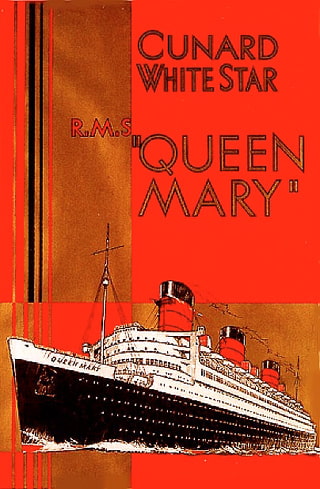 Another poster from the 1930s
Another poster from the 1930sThe loan was granted under the condition of a merger with the White Star. This was completed in May 1934, after which the work on the ship resumed immediately.
Five months later she was ready for launch. The story of her naming is fairly anecdotal, but there are several independent sources supporting it, so it might be true after all.
Anyway, the line had the long tradition of ship names ending in *ia, and the legend has it, the newest one was to be called Victoria.
This being a name of a queen, a formal royal permission was required. The official request presented to George V may have sounded to name the liner after "England's greatest Queen". The granted approval is told to have come as "My wife will be delighted."
Misunderstanding or not, this wasn't exactly the situation to set the record straight. Queen consort at the time was Mary of Teck, Queen Mary should it be.
The royal family visited the ship twice, to its christening ceremony at Clydebank and again after her arrival at Southampton. The queen seemed to enjoy her namesake noting in her diary: "Toured the new Queen Mary today. Not as bad as I expected."
The new liner departed on her maiden voyage on 27 May 1936, gained the Blue Riband in both directions in August, lost it to Normandie of France the next year, won it again in 1938 and held until July 1952.
Queen Mary stayed in service until 1967, completed 1,001 Atlantic crossings and was sold to the city of Long Beach, California. It is still there, moored at a quay as a hotel, museum, tourist site and event location.
When we go (7:17 min.)🚢
Bonus track
Same keywords, a different matter (4:28 min.)👑
Tags: #inplainlight #coolplaces #cunard #oceanliner #qm2
Unattributed images on this page are sourced from Wikimedia Commons.
Featured videos appear on following YouTube channels: a-ha, The Queen Mary, MikeOldfieldVEVO.
Links
- Cunard Line
- Running the last ocean liner in the world and two other cruise ships, the shipping company is the only one to operate a scheduled passenger service on the transatlantic route between Europe and North America. Another ship is under construction since October 2019, to be launched in 2022.
- Elbphilharmonie Hamburg
- Buy tickets for a real visit or pay a virtual one to Hamburg's newest landmark.
- Southampton SeaCity Museum
- Follow Titanic, her crew and passengers on their journey into the inevitable.
- Urban Adventures: New York
- Accompany a local guide with a small group to hidden gems in the Big Apple—or any other of 160 cities in 68 countries.
- Newport Cliff Walk
- Explore an easy to moderate walk along the Newport, RI eastern coast. If doing it for real at a cooler time of the year, be sure to return on foot along Bellevue Ave.
- Cape Breton Island official travel guide
- Learn why the top tip of Nova Scotia was chosen "the #1 island in the Americas" by Condé Nast Traveler readers in 2019.
Previous issue
- 01.19 – The love issue: Best Valentine's Day songs
- From Europe with love: Listen to unforgettable tunes of the 60s, 70s, and 80s in a ready-to-celebrate playlist!
|
Tell me what you think!
Is it useful 👍? Awful 👎? Leave a message! Your comments help make this site better (and give me a kick—one way or another).
Popular articles
-
A kind of magic
If a digital picture has to be seen in the real world, printed on a real medium and displayed in a real showcase, its transition from RAW to real is better done in an old school image editor. Enter A…
-
A duck for a dog
If you got your own place on the Internet, helping your visitors find what they are looking for is a great way to engage them and keep them staying a bit longer. A custom site search can achieve just …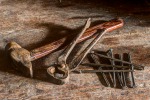
-
"Might as well have the best"
Aiming for better images? Think better lenses! This is your most important piece of gear, so you better get it sorted out. — Need some advice?
 Become a patron for
Become a patron for